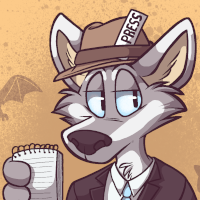Mark of the Tiger’s Stripe, by Joshua Yoder – book review by Fred Patten.
by Patch O'Furr
Submitted by Fred Patten, Furry’s favorite historian and reviewer.
 Mark of the Tiger’s Stripe, by Joshua Yoder. Maps by the author.
Mark of the Tiger’s Stripe, by Joshua Yoder. Maps by the author.
Seattle, WA, CreateSpace, August 2017, trade paperback, $15.00 ([3 +] 397 pages), Kindle $4.99.
Reading Mark of the Tiger’s Stripe is an exercise in frustration. There is a detailed map of the world of Amarthia, but it’s so reduced as to be illegible. There is considerable exciting action, but it’s wrapped in such extensive descriptions as to become almost boring.
The beginning of the novel is what would be a tense dramatic sequence anywhere else. A team of six big-game hunters, loaded for monsters, moves into a secretive nighttime kill mission in a deserted slum district in Kairran, the capital of the desert nation of Pytan. Yet it goes on for forty pages!
“Vincenzo Nieves only averaged 165 centimetres, but the long ears poking out through the crown of his worn white fedora with its faded black band made him appear much taller. As he hop-stepped along, they bobbed and swayed, twitching now and again like electrified antennae.
The jackrabbit had a melodious baritone honeyed by the southern strains of upper-class Banton, far away in the bayous of the West United Kingdoms. Or at least it would be melodious if it was not constantly ringing in the ears of his teammates.
‘So there I was, just enjoyin’ a nice breakfast salad. Actually, it kinda reminded me of the carver’s salad they serve at this quaint café in Clairmount, but never mind. I’m sittin’ there, and in from the kitchen walks this absolutely gorgeous leopard girl, I mean you’ve never seen spots like she had. She had this cute little bob cut that showed off her earrings and a cute top that … well …’ He trailed off with a lascivious gleam in his golden-brown eyes, but no one was actually paying attention to him.
Most of his stories tended to end this way. Only Vince’s appetite for food rivalled his appetite for women. He was not the guy with a girl in every town; he was the guy with a dozen girls in every town. Still, Mohan [the tiger leader] had to admit that, for all his boasting, at least he kept the stories relatively clean. And his behaviour wasn’t entirely without cause; he was a handsome fellow who kept his wavy blond long-fur trimmed short and proper, as befitted a southern gentleman, and had dyed and groomed the fur on his chin into a matching goatee.” (pgs. 10-11)








 Otters in Space III: Octopus Ascending, by Mary E. Lowd
Otters in Space III: Octopus Ascending, by Mary E. Lowd Oswald the Lucky Rabbit: The Search for the Lost Disney Cartoons, by David A. Bossert. Introduction by J. B. Kaufman. Illustrated.
Oswald the Lucky Rabbit: The Search for the Lost Disney Cartoons, by David A. Bossert. Introduction by J. B. Kaufman. Illustrated. The Lamb Will Slaughter the Lion, by Margaret Killjoy
The Lamb Will Slaughter the Lion, by Margaret Killjoy Passing Through; Tails from the Road [edited by Weasel]
Passing Through; Tails from the Road [edited by Weasel]